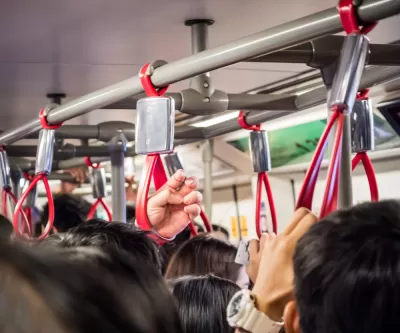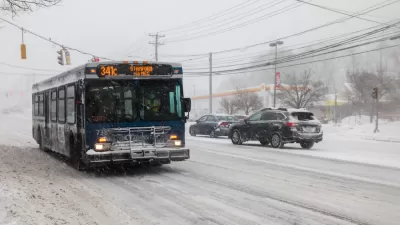Fare-free programs that apply to buses and not trains create a fragmented transit system and encourage more people to use slower, less efficient modes.

The idea of fare-free transit is nothing new, and has been gaining more traction in cities around the country in the last few years. However, Jarrett Walker, writing in Bloomberg CityLab, calls attention to what Walker believes could be a troubling trend: making fare free on buses, but not trains. “If that trend spreads, we should expect some bad consequences,” Walker writes.
As Walker explains, Washington, D.C. and Boston are both exploring free bus transit, but have kept fares on their train systems. According to Walker, “A certain kind of capitalist would say this is fine: The train is faster, so it should cost more. But when people use a slower service rather than a faster one, it’s not just bad for them. It’s also bad for the transit agency budget, which means it’s bad for everyone who uses transit or benefits from it.”
Buses, which are smaller, will reach capacity more quickly. “Trains, on the other hand, are much more likely to have surplus capacity, especially now that so many suburban commuters who used to pack them are working from home, so they could be serving many of the same people at lower cost.”
At the same time, the distinction between buses and rails also raises questions about who each mode serves. Additionally, many trips require combining both bus and train, and lower-income riders are more likely to have more dispersed travel patterns that are often better served by buses. For these and other reasons, Walker argues, the free fare debate should take place around the whole transit network. “An efficient and therefore liberating urban transit network encourages people to think about the total network, and to use buses or trains according to which is better for each part of their trip.”
FULL STORY: When Buses Are Free But Trains Aren’t

Planetizen Federal Action Tracker
A weekly monitor of how Trump’s orders and actions are impacting planners and planning in America.

Chicago’s Ghost Rails
Just beneath the surface of the modern city lie the remnants of its expansive early 20th-century streetcar system.

San Antonio and Austin are Fusing Into one Massive Megaregion
The region spanning the two central Texas cities is growing fast, posing challenges for local infrastructure and water supplies.

Since Zion's Shuttles Went Electric “The Smog is Gone”
Visitors to Zion National Park can enjoy the canyon via the nation’s first fully electric park shuttle system.

Trump Distributing DOT Safety Funds at 1/10 Rate of Biden
Funds for Safe Streets and other transportation safety and equity programs are being held up by administrative reviews and conflicts with the Trump administration’s priorities.

German Cities Subsidize Taxis for Women Amid Wave of Violence
Free or low-cost taxi rides can help women navigate cities more safely, but critics say the programs don't address the root causes of violence against women.
Urban Design for Planners 1: Software Tools
This six-course series explores essential urban design concepts using open source software and equips planners with the tools they need to participate fully in the urban design process.
Planning for Universal Design
Learn the tools for implementing Universal Design in planning regulations.
planning NEXT
Appalachian Highlands Housing Partners
Mpact (founded as Rail~Volution)
City of Camden Redevelopment Agency
City of Astoria
City of Portland
City of Laramie





























